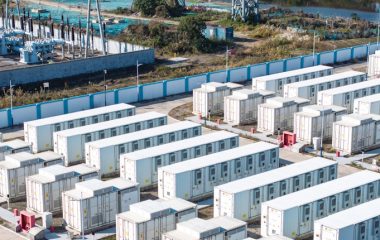
Photo: Akitada31 from Pixabay
Gas, oil and construction companies joined forces with research institutions in Greece and foreign partners in the development of the White Dragon. The green hydrogen project is estimated at EUR 2.5 billion though it could grow to as much as EUR 4 billion.
The European Commission is receiving proposals until May 7 from the members of the European Clean Hydrogen Alliance for renewable and low-carbon hydrogen technologies and solutions. It is one of the opportunities for Greek companies and their partners in a plan called White Dragon to develop it further. The coalition already applied for the status of an important project of common European interest (IPCEI) in the context of the Hydrogen Europe program.
The White Dragon leans on solar energy for the production of hydrogen. The project involving photovoltaic facilities with an overall capacity of 1.5 GW is estimated to be worth EUR 2.5 billion.
The system is planned to be installed in Western Macedonia, currently Greece’s lignite heartland. The country intends to abandon the use of coal by 2025.
Hydrogen is also intended for export
Public Gas Corp. (DEPA) is the coordinator of the industry group, which includes Motor Oil, Hellenic Gas Transmission System Operator (DESFA), Mytilineos, Hellenic Petroleum, Terna and Polish bus manufacturer Solaris. Also involved are the Centre for Research and Technology Hellas – CERTH (known also by its Greek acronym EKETA) and the National Centre for Scientific Research Demokritos.
While the White Dragon is based on green hydrogen technology, which means the fuel is produced from water by using electricity from renewable sources, it also envisages the connection with natural gas pipelines. The project is intended for district heating, export via the Trans Adriatic Pipeline (TAP) and for fueling buses and trucks.
The hydrogen will be produced with electrolyzers powered by photovoltaics and used in a variety of industries and sectors
Two other proposals have already been submitted to the Green Fund of Greece. One envisages the utilization of sewage sludge to make hydrogen that would fuel municipal garbage trucks. The other one is for the conversion of a public building into a structure with a positive energy balance, where the surplus energy would be used to make hydrogen for an ambulance car.
Some of the hydrogen should be transported to three refineries and the Hellenic Fertilizers and Chemicals (ELFE) plant for industrial use.
The entire investment could be expanded to as much as EUR 4 billion, depending on the size of the solar power plants that would be installed. Hydrogen production capacity is projected to reach 3.9 GW by 2028 or 16,000 tons per year.
White Dragon includes 122-kilometer long gas pipeline
DESFA’s ten-year development plan, worth EUR 540 million and recently approved by the Regulatory Authority for Energy, is centered on projects for the transportation and storage of hydrogen and other renewable gases as part of the country’s decarbonization program.
The company intends to build a 122-kilometer long pipeline in Western Macedonia worth EUR 110 million. Existing infrastructure will need to be adapted to be able to mix hydrogen with fossil gas.
Existing gas infrastructure must be adapted to be able to take in hydrogen
One other major green hydrogen project relevant for Southeastern Europe is the Blue Danube, worth an estimated EUR 5.8 billion. Germany, Austria, Czech Republic, Hungary, Slovakia, Croatia, Romania and Bulgaria plan to develop a production capacity of 2 GW.
The European Union’s Hydrogen Strategy targets 6 GW of renewable hydrogen electrolyzers and production capacity of one million tons of renewable hydrogen by 2024, and 40 GW and 10 million tons by 2030.


















Be the first one to comment on this article.